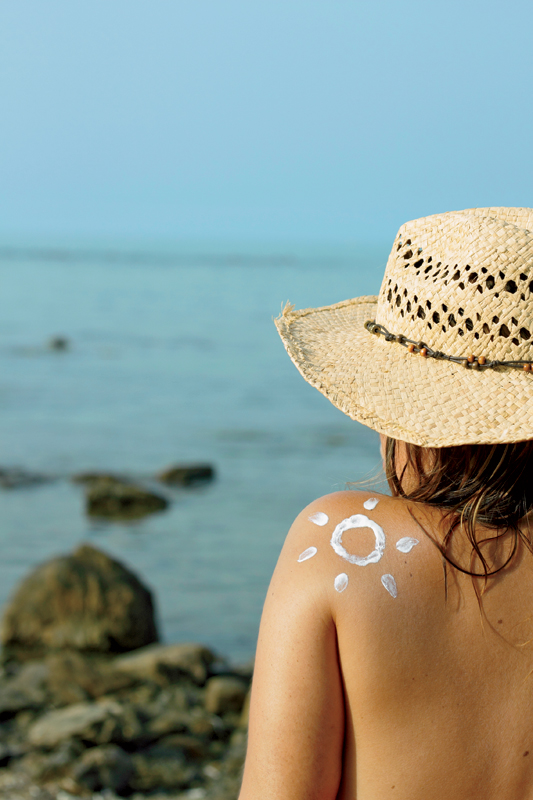Sunscreen—Spray it or smear it?
By Mary Kay Kleist
June 2013 View more Health & Fitness
 This time of the year the sun’s rays are the most intense. We know that sunscreen is a must when we play under the strong summer rays. If you skip it, you can increase your risk for sunburn, wrinkles, and skin cancer. According to the Centers for Disease Control and Prevention, skin cancer is the most common form of cancer in the United States.
This time of the year the sun’s rays are the most intense. We know that sunscreen is a must when we play under the strong summer rays. If you skip it, you can increase your risk for sunburn, wrinkles, and skin cancer. According to the Centers for Disease Control and Prevention, skin cancer is the most common form of cancer in the United States.
ULTRAVIOLET LIGHT
There are two types of ultraviolet light, UVA rays and UVB rays. Both UVA and UVB rays can lead to skin cancer. UVB rays cause sunburn while UVA rays penetrate deeper into the skin, suppressing your immune system, causing age spots and wrinkles. “Ultraviolet radiation produces free radicals at the skin surface, which starts a chain reaction that culminates in photo-aged skin. The damaged DNA results in collagen breakdown, so the skin becomes more wrinkly and saggy, and leathery-looking with broken blood vessels and enlarged pores. Brown sun spots also appear from sun-induced DNA mutation,” said Dr. Jessie Cheung, dermatologist at Rush University Medical Center.
Sunscreen is the first line of defense against harmful UV radiation. But what type works better, spray-on or lotion?
LOTIONS
Lotions can be goopy, greasy, and gummy. And it’s not easy getting young children to sit still long enough to properly apply sunscreen lotion. But lotions can be less expensive than sprays and since they leave a white trail, you know when you’re covered. They also tend to last longer than spray-on sunscreen.
SPRAYS
They can be pricey, but they’re easy to apply. Even kids can do a good job covering hard-to-reach places. Sprays tend to be lightweight and drying quickly, so you might like the way it feels on your skin. However, many sprays contain alcohol, which can irritate sensitive skin. And on a windy day, you can miss a spot or even get it in your eyes. You also don’t want to inhale the spray or use it near an open flame.
When used properly, Dr. Cheung says either sprays or lotions can do the job, but there are certain ingredients you should look for when buying sunscreen. “Look for zinc oxide, titanium dioxide and avobenzone. These offer more broad-spectrum coverage, against all the wavelengths of UV radiation,” said Dr. Cheung.
READ THE LABELS
New labeling for sunscreen makes it easier to choose a product. “Only broad-spectrum sunscreens with an SPF of 15 or higher may state that they protect against skin cancer and skin aging if used as directed with other sun protection measures. The terms ‘sunblock,’ ‘sweat proof’ and ‘waterproof’ are no longer allowed on labels. ‘Water-resistant’ sunscreens must specify whether they protect the skin for 40 or 80 minutes of swimming or sweating,” said Dr. Cheung.
Dr. Cheung says she keeps multiple forms of sunscreen around for her family, who like the choice between sprays, lotions, gels, and powders. “Sprays are easy to get on a child when you are chasing after them. Gels are nice for the face if you are worried about eye irritation from sweating or want to avoid sticky hands. I use sunscreen powder to re-apply SPF to my face, since it won’t smudge my make-up.”
The key is to wear sunscreen every day, even if it’s cloudy. UV radiation can even penetrate through windows, so keep that in mind during your daily commute or on your next road trip. Since UV rays reflect off the sand and the water, you can also get sunburned in the shade. Oh, and that bottle of sunscreen leftover from last year, Dr. Cheung says toss it. More than likely, the sunscreen has probably degraded from the heat and the sun.


